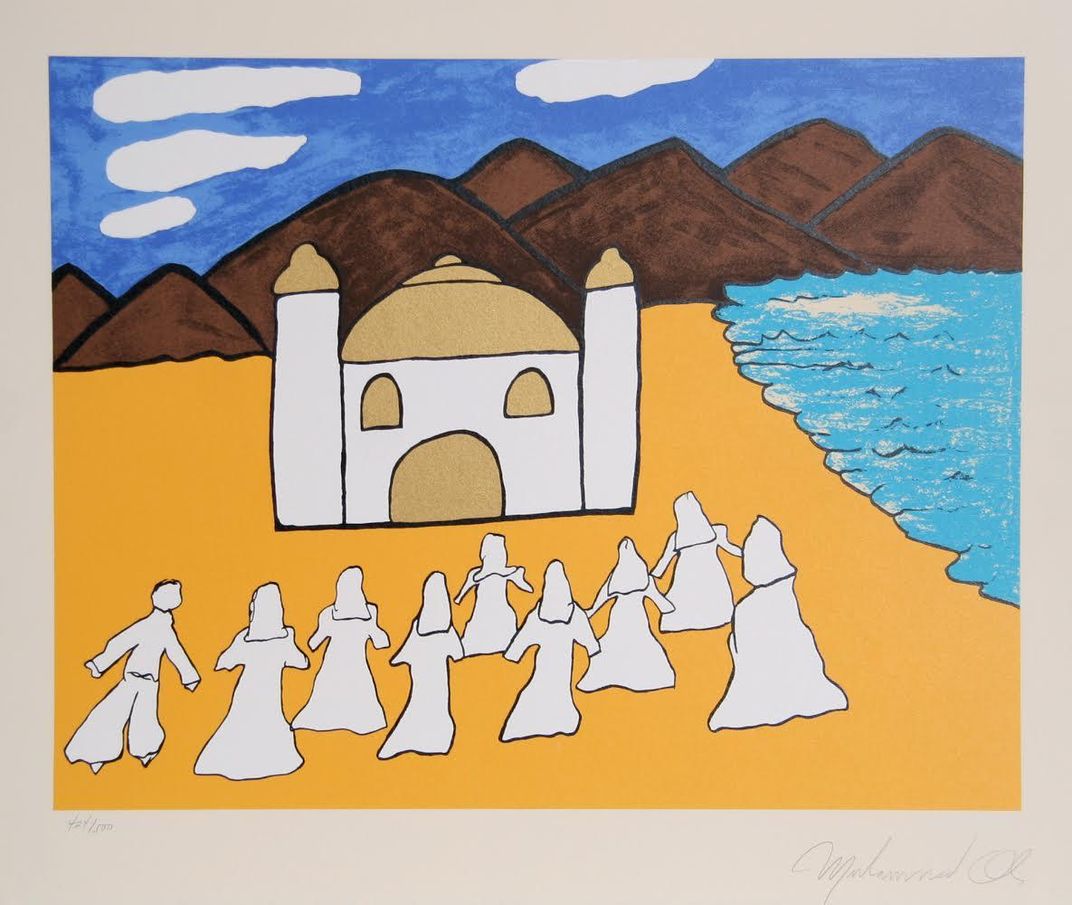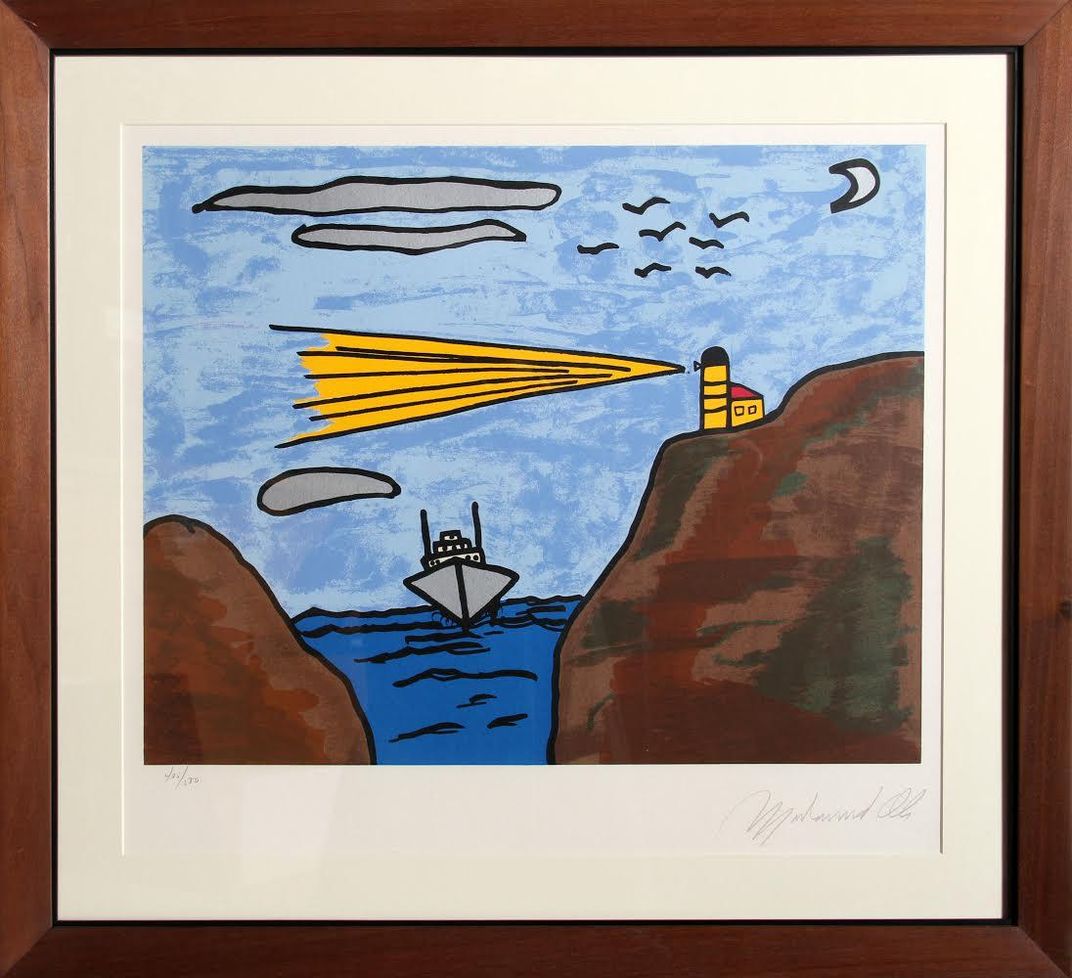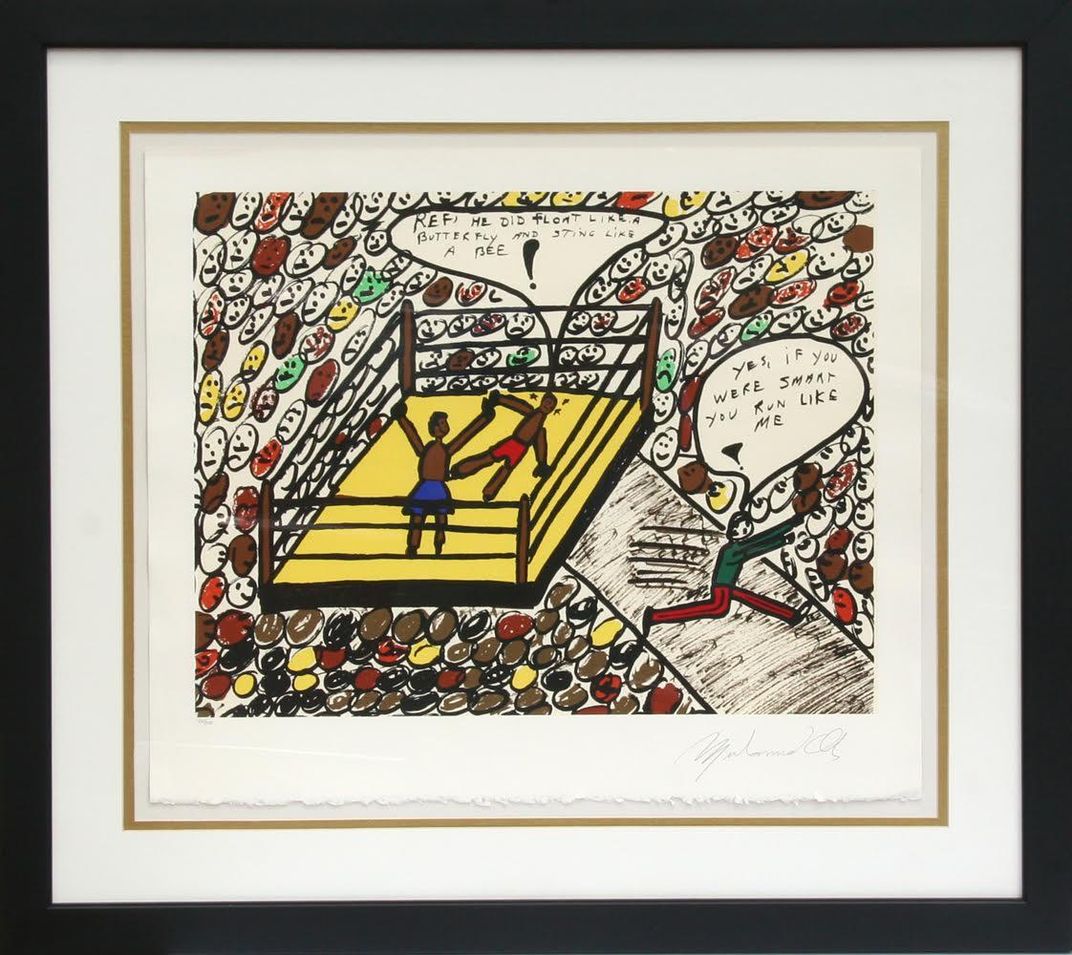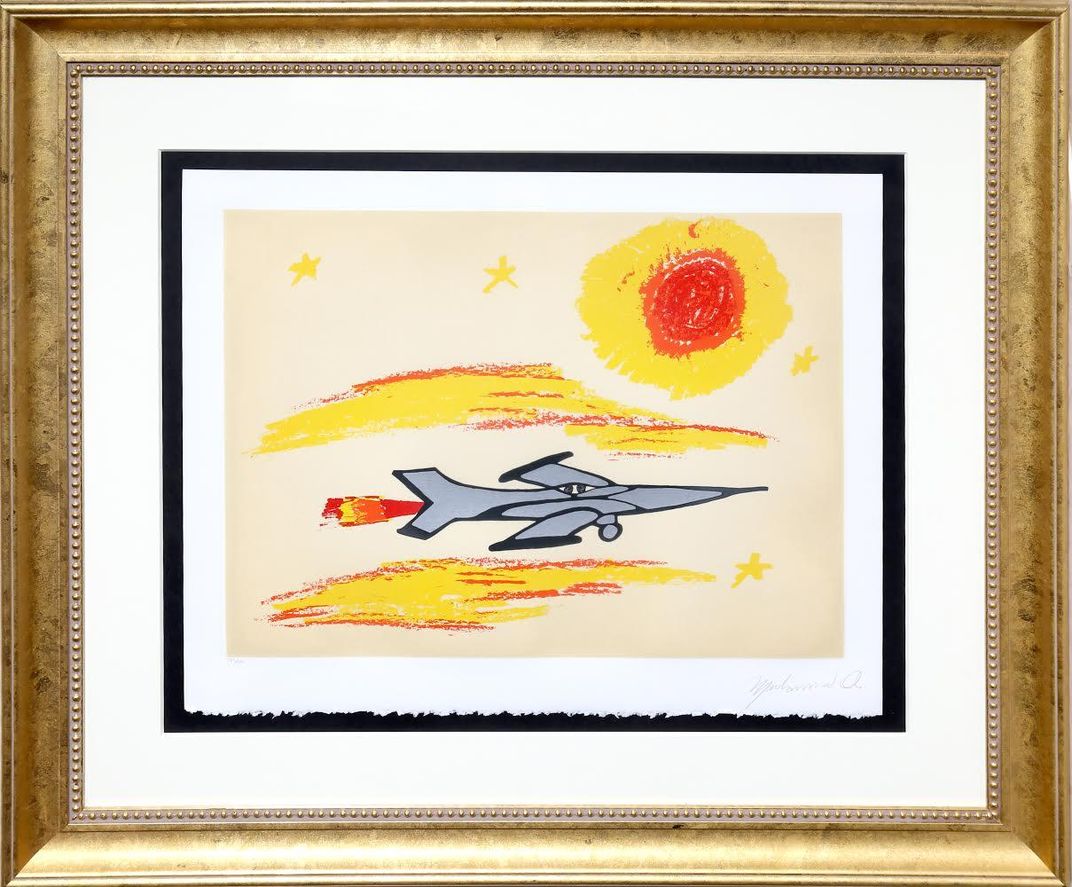Artwork by Muhammad Ali Is Going up For Auction
You could own a painting by the Louisville Lip
During his life, Muhammad Ali was many things to many people: a legendary boxer, a civil rights activist, a skilled showman. But what many may not know is that he was also a visual artist who took joy in making brightly colored drawings inspired by the life experiences that made him an iconic figure of the 20th century. Now, several prints by Ali, who died on June 3, are being auctioned off in New York City’s RoGallery sale next Wednesday.
Ali was not a trained artist, but he came from a family of artists, musicians, and craftspeople. His father, Cassius Clay, Sr., was a sign painter and muralist who lamented that he couldn’t be a recognized artist because of racial discrimination, Robert Lipsyte reports for the New York Times. In high school, Ali’s best subjects were art and gym; while the latter became the basis for his boxing career and subsequent celebrity, he also continued to draw throughout his life.
"He was not trained in poetry; he was not trained in drawing… he had a natural talent," Robert Rogal, RoGallery’s owner, tells Sarah Cascone for artnet News.
Ali’s artwork may not be technically masterful, but there is an undeniable joy in his drawings. Whether depicting a boxing match, a fighter jet, or Muslim people dressed in white and headed for prayer at a mosque, Ali’s drawings show another side of the man whose brash, boisterous personality nabbed him headlines and fans around the world, Steven Thrasher writes for the Guardian.
“The racist world Ali inhabited requires black men to be tough and hard. Ali’s drawings allow him a way not to be hard, or loud – but to be soft, joyous, kidlike, tender,” Thrasher writes. “Tenderness is often denied to black men, and giving it up becomes a price of our survival. As with his smile, it is a beautiful thing to see Ali indulge his tender side.”
The pieces up for auction on June 15 were all created in 1979 and printed in limited runs of 500 each. The drawings reference many of Ali’s strongest political statements, like his outspokenness about his Muslim faith and the impact of slavery and discrimination on his life and the lives of his ancestors. They also point back to his career in the ring, depicting himself triumphantly standing over an opponent’s body, surrounded by a sea of black, brown, white, yellow, red and green faces.
“Ali was not just one of world’s greatest international athletes but a cultural phenomenon whose influence is impossible to quantify,” Thrasher writes. “He was, until 2016, one of America’s greatest living artists, whose body, visage and soul personified an African American artistry in everything he did.”



